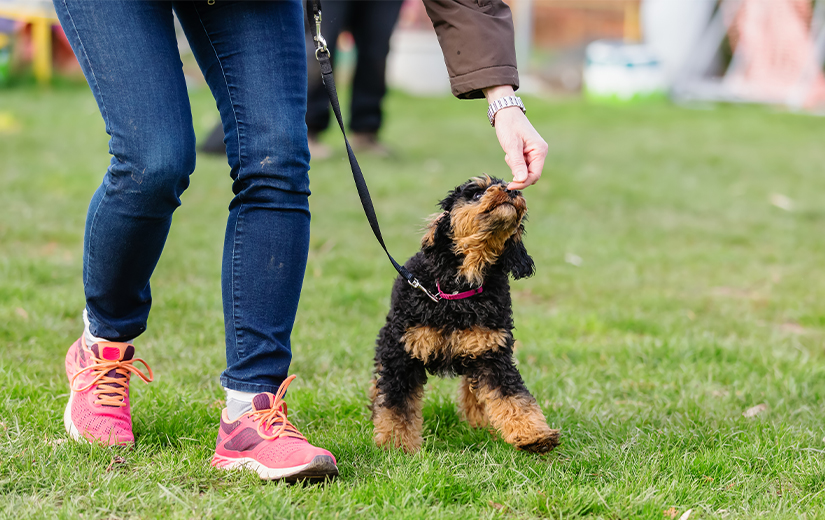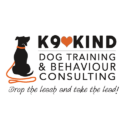Kind Corner: How to use treats in dog training – Part 1

Questions about the use of treats seem to come up frequently.
Luckily, AnimalKind accredited trainer Carrie Lumsden of K9 Kind Dog Training & Behaviour Consulting, brings us a helpful three-part series about how to use treats in dog training, how to avoid bribery and how to fade treats in training.
Let’s get reading!
Part 1: Go ahead, use treats!
There is a common misconception that if you use treats to train your dog, you are just bribing your dog and that you will always need treats to get your dog to do anything.
We expect our dogs to want to do what is asked of them because they love and respect us, but this is based on the false conception that loyalty and obedience are connected.
Dogs don’t do what they do simply out of love for you, or alternatively, because they disrespect you. They don’t look for ways to disobey you as a means of seeking dominance.
The skills we teach our dogs are learned behaviours and have nothing to do with loyalty or respect.
Dogs exist to make themselves happy and look for the quickest way to the best reinforcement in the environment. If that isn’t you, they will find something else.
The best way to motivate your dog is to teach them that if they make you happy offering behaviours that you like, you will make them happy giving your dog rewards they like.
What motivates a dog?
You arrive at a new place, and your dog is more interested in everything than you standing at the other end of the leash. You let your dog off-leash and call them shortly after, but they have found other things more interesting than you. Chasing squirrels and sniffing butts wins every time!
Dogs look for the quickest way to reinforcement, which is whatever your dog finds rewarding: chasing squirrels, running up to another dog, sniffing and exploring the environment, even a fluttering leaf.
Working for a paycheck
Most of us go to work for a paycheck. But if your boss called you to do a job on the weekend and says, “you should want to do the work out of respect for me”, what would you do? Is working out of respect for your boss motivating?
We are motivated to work for a paycheck, or at least some kind of pay-off, even if that is the joy of helping others through volunteer work. People and dogs are motivated to do what we do because it pays off. For most dogs, food is the highest-value currency and most motivating reward. Food is also the most “user-friendly” way for most pup parents to train effectively because it is easy to use.
Reward-based training is the fastest and easiest way to teach your dog a new behaviour and motivate them to want to do it.
Go ahead, use treats!
Treats are the ideal reward for training. Dogs innately value food. If your dog is not food-motivated, it is often due to being over their threshold and too distracted, or they are full, and we have run out of currency for the moment.
Treats can be used to reward good behaviour and to modify fear, anxiety, excitable and aggressive emotional responses.
- Treats are easy to deliver, helping us improve our timing and communicate clearly with our dogs, which translates to quick and efficient human responses and better training results.
- Training with food strengthens the bond we have with our dog and helps to build loyalty.
- With the proper use of treats, your dog will also listen when you ask them to do something, even if there’s no food in sight.

What are the best food treats for dog training?
Most dogs prefer cheese, cooked chicken, freeze-dried liver, or beef over kibble. The value of the reward is important. The type of food you use for rewards should vary in worth.
When you are training in a highly-distracting environment, use a high-value reward.
If you are worried about weight gain, reduce your dog’s daily kibble. Unless your dog has dietary restrictions, there is no need to restrict their diet to only their daily kibble. And, you can use both treats and your dog’s regular diet as performance-based paychecks throughout the day.
Now that the benefits of using treats have been established, in part two, I will explain how to use treats correctly and avoid bribery, leading to part three, where I will describe how to fade treats in training.

